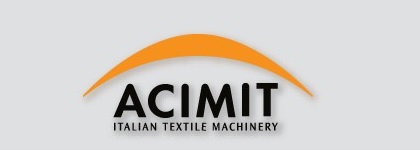During the 4th quarter of 2013, orders for textile machinery rose according to figures compiled by the economic department at ACIMIT (the Association of Italian Textile Machinery Manufacturers). With a 5% increase compared to the previous quarter, the absolute value stands at 88.5 points in reference to 2010’s 100 points. (See Exhibit 1)
Even though domestic orders fell by 15% for an absolute value of 49 points, exports remain the main growth driver with a 95.3 value index which rises 7% over the previous quarter. On an annual basis compared to 2012’s average, the index has declined by 4% because according to ACIMIT’s president, Raffaella Carabelli, “…our internal market… appears that investments in the textile industry are at an absolute standstill.”
The foreign side seems to be on a rollercoaster pattern since 3rd quarter’s declining numbers were outdone by 4th quarter’s increased strong sales. The foreign trade data provided by ISTAT, The Italian National Institute of Statistics, confirm a slight drop compared to the previous year. “The strong euro against many local currencies is a definite factor,” explains ACIMIT’s president. “The Chinese market is also cause for concern, since it accounts for roughly 20% of our exports, and their investments in textile machinery fell during 2013.”
{pagebreak}
In order to help ACIMIT in their internationalization processes, the Italian Trade Agency for the promotion and internationalization of Italian businesses abroad, has once again planned an intense promotional campaign for the industry in 2014. Together they will promote initiatives for Italy’s textile machinery sector held in all of 16 countries by participating in industry trade fairs, technology seminars and incoming missions. These countries include: China and India, as well as nations and markets, that have lower volumes for machinery but present potential business opportunities for our machinery builders, such as Ethiopia, Mongolia and Uzbekistan. “Our machinery manufacturers already export over 80% of their production,” states Carabelli, “and they must be supported by promotional initiatives, especially in markets where Made in Italy products – at least as far as machinery is concerned – still don’t receive the recognition they deserve. In this sense,” concludes ACIMIT’s president, “I believe we need to recognize the efforts being made by the [Italy’s] Ministry for Economic Development in providing funds for the promotion of new, indispensable resources.”


























